3.8 and 3.10 Iteration and Loops Notes and Hacks
Markdown post of the group lesson for 3.8 and 3.10
Notes
3.8
Iteration
- Iteration is a repeating part of an algorithm that repeats a specfied number of times until a condition is met
- Iteration statemtns change the sequential flow of control by repeating a set of statements zero or more times, until a stopping condition is met
Example:
- Trying to find a lost item
- Determine what the item is
- Ask every family member/friend who would see it
- Stop condition: If you find it go to step 5
- make a full sweep of everywhere you have
- Stop Condition: If you find it go to step 5
- Repeat steps 2 and 3 until the item is found
- If never find it: Go Back to your room and cry
- If you find item: enjoy the item
- Example in code

Result of Iteration Statements
- When using a range function, the last number in the input is not included in the output.
- Starting value: The number that the range function will start with
- Incrementing: The number in which the range increments by
- Ending value: The final number of the range.
Loops
- While loops use a condition then print something based on a condition.
- This example prints all even numbers less than 10.
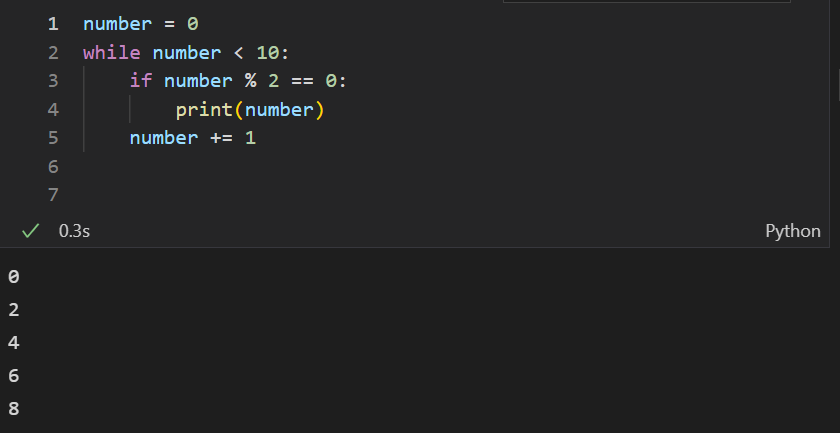
- the percent sign means modulus so meaning if there is a remaninder when we dvide. So if number divided by 2 has no remainder then it will print number.
- Then after that it will add 1 to the number and repeat the process untill it reaches 10.
3.10
Lists
- the process of visiting each element in a list in a sequential order.
- Complete Traversal: All elements in a list are assessed - Partial Traversal: Only a given portion of elements are assessed
- Iterative Traversal: When loops are used to iterate through a list and to access each single element at a time.
- Traversing allows you to access or search for certain elements
College Board Lists
- insert( ) allows a value to be inserted into a list at index i
- append( ) allows a value to be added at the end of a list
- remove( ) allows an element at index i to be deleted from a list
- length( ) returns the number of elements currently in a specific list
Here is an example question
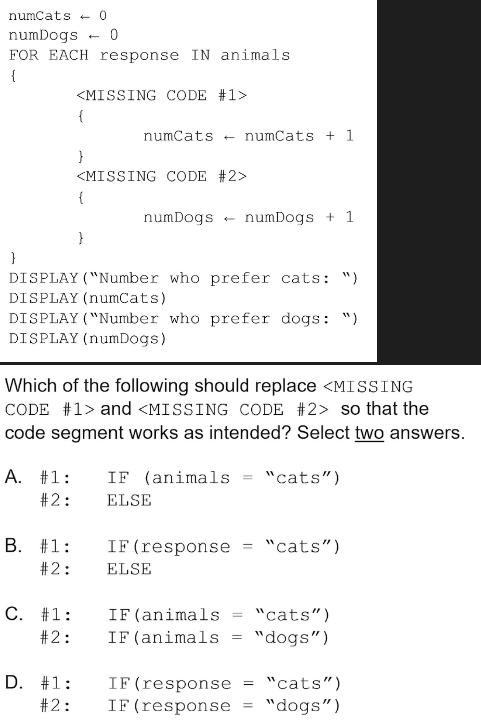
- The answers would be B and D, because they value the responsies rather than the animals
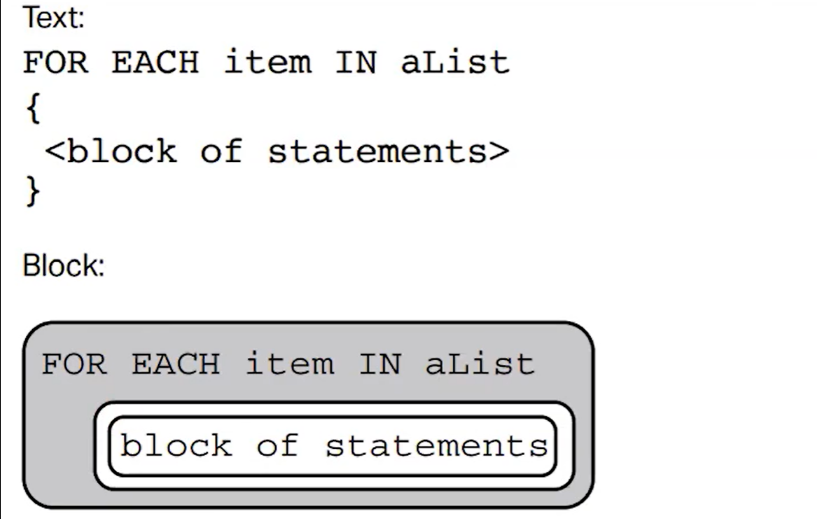
- The loop above allows the coder to access each item within the list
Hacks
Iteration
- Define an Iteration
- Iteration is a repeating part of an algorithm that repeats a specfied number of times until a condition is met
- Make your own example of an iteration with at least 4 steps
and a stopping condition(Similar to mine that I did)
- Hypothetically there are 8 people named Liav (1-8)
- Each person will say that their name is Liav until they get to the person who’s name is not Liav.
- Each time the next “Liav” comes the number increases by one
- Stop using a break function when you get to the person not named Liav (6)
- Program a simple iteration.
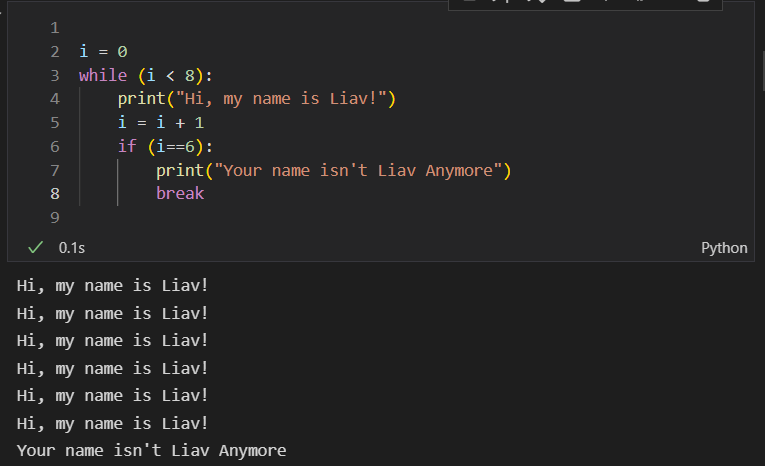
- This iteration would have repeated Hi, my name is Liav! 8 times, but I added a break at 6 that prints “your name isnt Liav Anymore”
Iteration Statements
- What is an iteration statement, in your own words?
- Iteration statemtn repeat statements zero or more times, until a stopping condition is met.
- Create a descending list of numbers using for loop
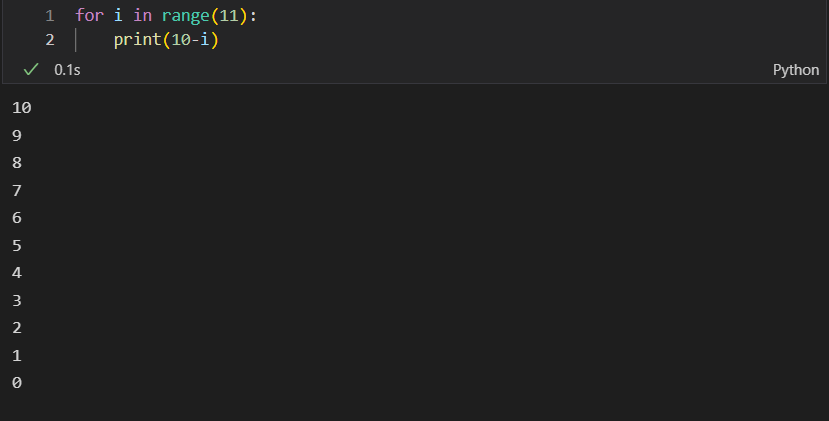
- Using while loop, make a list of numbers which will form an output of 3,16,29,42,55,68,81

Find the Lowest Value

- Variable that holds the minimum and sets it to potential minimm value loop check and displays the minimum value.
Quiz
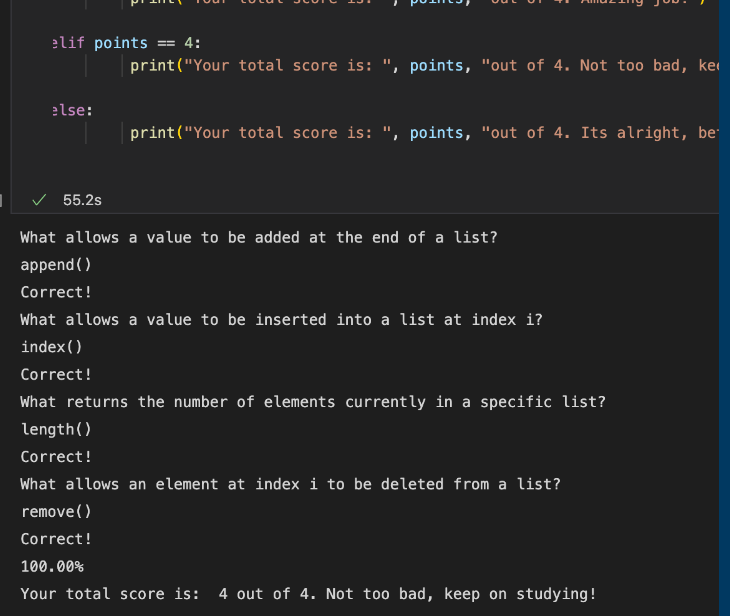
A few notes on reference sheet
- aList[i] accesses the eleement of aList at index i the dirst element of aList is at index 1 and is accessed using the notation aList[1]
- x <– aList[i] assigns the value of aList[i] to the variable given (x in this case)
- Append (aList, value) increases the lenght of aList by 1 at the end of a list
- Insert/Remove shifts the position to the right (increase) or shifts the position to the left (decrease)
- Insert increases the value of the list by 1
- Remove decreases the value of the list by 1